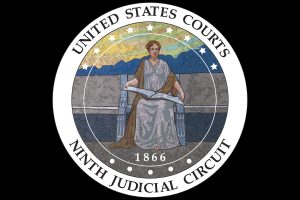Rogue Designers, Copyright Infringement and “Willfulness”
 SAN FRANCISCO – In a ruling filed Tuesday by the U.S. Court of Appeals for The Ninth Circuit, a three-judge panel held that the trial court erred in finding the defendant was “willful” in his infringement on the plaintiff’s copyrights, saying that the trial judge applied the incorrect standard when instructing the jury in the case.
SAN FRANCISCO – In a ruling filed Tuesday by the U.S. Court of Appeals for The Ninth Circuit, a three-judge panel held that the trial court erred in finding the defendant was “willful” in his infringement on the plaintiff’s copyrights, saying that the trial judge applied the incorrect standard when instructing the jury in the case.
In the case, Erickson Productions v. Kast, photographer Jim Erickson sued Kraig Kast, the owner of Atherton Trust, for using three of Erickson’s photographs on the Atherton Trust website without licensing the photos. Kast did not design the Atherton site himself; it was created by the design company Only Websites on Kast’s instructions.
As part of the development process for the Atherton website, “Kast completed a questionnaire outlining his goals for the revamped website” in which he identified Wells Fargo as one of Atherton’s competitors, and “highlighted certain features of Wells Fargo’s website he found appealing,” according to court documents.
In emails to Only Websites, Kast stated that he wanted to “mimic Wells Fargo’s website” and that he needed to choose photos from options provided to him by Only Websites. Ultimately, three photos from the Wells Fargo website which were taken by Erickson were incorporated into Atherton’s developmental website.
Erickson discovered the infringing use of his photos using Picscout, software that tracks images online by running nightly, internet-wide searches. In July 2011, Erickson sent a cease and desist letter to Atherton, demanding that they take down the photos and pay damages. According to court documents, “Kast promptly directed Only Websites to remove the photos, which was done the next morning, but refused to pay” the damages.
In its opinion filed Tuesday, the Ninth Circuit affirmed in part and reversed in part the district court’s finding that Kast vicariously and contributorily infringed on Erickson’s copyrighted images by displaying them on the Atherton website. The panel affirmed the jury’s contributory liability verdict and therefore affirmed the judgment against Kast – but it also vacated the jury’s willfulness finding and remanded the case to district court for “a determination of whether defendant’s infringement was willful on the existing record.”
In its opinion, the Ninth Circuit wrote that a finding of willfulness “requires a showing of recklessness, willful blindness, or actual knowledge” and “merely negligent conduct is not willful.” The panel also vacated the jury’s vicarious liability verdict, agreeing with Kast that “Erickson presented no evidence that could constitute a direct financial benefit as a matter of law.”
“A website owner can receive a direct financial benefit from the presence of infringing material on his or her website, but only ‘where the availability of infringing material acts as a draw for customers,’” the panel wrote in its opinion, citing the case Ellison v. Robertson. “If the infringing material is ‘just an added benefit,’ rather than a draw, it does not confer a direct financial benefit on the website owner… Erickson does not argue the photographs were anything more, at best, than an ‘added benefit’ to visitors of Kast’s website, so the infringement did not confer a direct financial benefit on Kast as a matter of law.”
While Erickson argued that Kast received a direct financial benefit by avoiding paying the licensing fees for the photos, the Ninth Circuit didn’t buy that argument – or the related argument that Only Websites avoided the licensing fees in its capacity as Kast’s agent.
“Erickson’s alternative theory that Only Websites avoided the licensing fee in its capacity as Kast’s agent, such that Kast himself is liable for its failure to pay, is also unpersuasive,” the panel wrote in its opinion. “Kast employed Only Websites to develop the website, but the latter’s decision to infringe Erickson’s copyright would have exceeded the scope of any agency relationship that may have existed between them. Thus, Only Websites’ avoidance of licensing fees did not confer a direct financial benefit on Kast as a matter of law.”
In terms of its impact on the damages awarded to Erickson by the jury, the meat of the Ninth Circuit’s opinion comes in the section dedicated to examining the “willfulness” question. As the panel noted in its opinion, “the jury’s willfulness finding is relevant to its award of statutory damages.”
“Absent a finding of willfulness, the jury may award statutory damages ‘in a sum of not less than $750 or more than $30,000’ per work infringed,” the panel wrote, citing 17 U.S.C. § 504(c)(1). “However, if the copyright owner proves that the infringement was ‘willful,’ the court may increase the statutory damage award to $150,000 per work infringed.”
At trial, the district court judge instructed the jury that infringement is considered willful when “(1) the defendant knew that those acts infringed plaintiffs’ copyrights; or, (2) the defendant should have known that those acts infringed plaintiffs’ copyright; or, (3) the defendant engaged in conduct that was reckless or demonstrated a reckless disregard for plaintiffs’ copyrights.”
Had the jury not found Kast’s infringement to be willful, the statutory damages it awarded would have been capped at $90,000, as opposed to $450,000. The Ninth Circuit found that the trial judge erred in providing the “should have known” standard, because the instruction “does not fit within this framework because it is a negligence standard.”
“To say that a defendant ‘should have known’ of a risk, but did not know of it, is to say that he or she was ‘negligent’ as to that risk,” the panel wrote in its opinion. “Negligence is a less culpable mental state than actual knowledge, willful blindness, or recklessness, the three mental states that properly support a finding of willfulness.”
The panel found that the erroneous willfulness instruction was “likely prejudicial to Kast, so remand is required.”
“While the evidence may have established that Kast was negligent, it is much less clear that it established recklessness, willful blindness, or actual knowledge,” the panel wrote. “Kast presented evidence that he did not know Only Websites was or might be infringing. Kast’s contract with Only Websites suggests that Kast reasonably believed it was Only Websites’ responsibility to obtain licenses for Erickson’s photos…. Several of Kast’s other actions also suggest that he was not reckless with respect to Erickson’s rights: he obtained licenses for the photos that he supplied to Only Websites, and promptly removed the infringing photos when Erickson asked. If the jury had been properly instructed, it might well have refused to find Kast willful on this record.”
While the Ninth Circuit’s opinion greatly reduces the statutory damages Kast may have to pay in the case, its opinion does not represent a total victory for the defendant. In his appeal, Kast argued that he was an improper defendant, because “Erickson should have sued Atherton, not Kast.” The panel rejected this argument, saying that “even if Atherton Trust is also liable for the infringement, Kast would be jointly and severally liable, so he is a proper defendant.”
The case will now head back to the trial court to reconsider statutory damages, with the jury’s vicarious liability finding vacated, but its contributory liability finding still intact.
For adult site operators, it’s important to note that while the Ninth Circuit found the infringing images at issue in this case merely provided Kast with an “added benefit,” which prevented the panel from finding a “direct benefit” was conferred upon Kast through the infringement, that finding is fact-dependent and would not necessarily be the case for infringing images used in the context of an adult site.
For example, if you contract with a designer to create a tour for a subscription adult site and the designer used sexually-explicit images from a competing site in designing the tour, the rightsholder likely would have a stronger argument that you gained a “direct benefit” from use of those images than Erickson had in this case. (Of course, there are also questions of 2257 compliance with respect to sexually-explicit images used in such an adult site tour, but that’s a whole other subject – one which would require a lengthy post of its own to address.)













